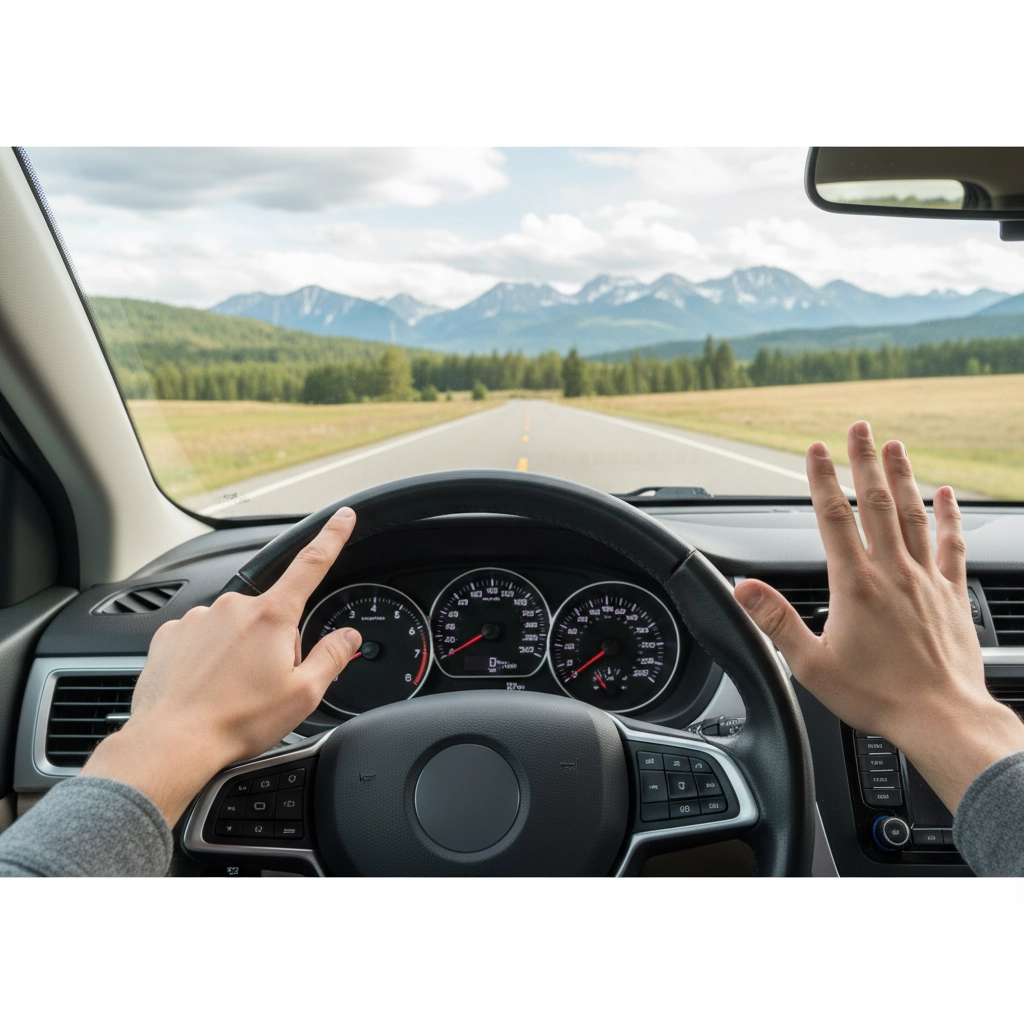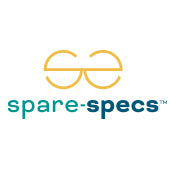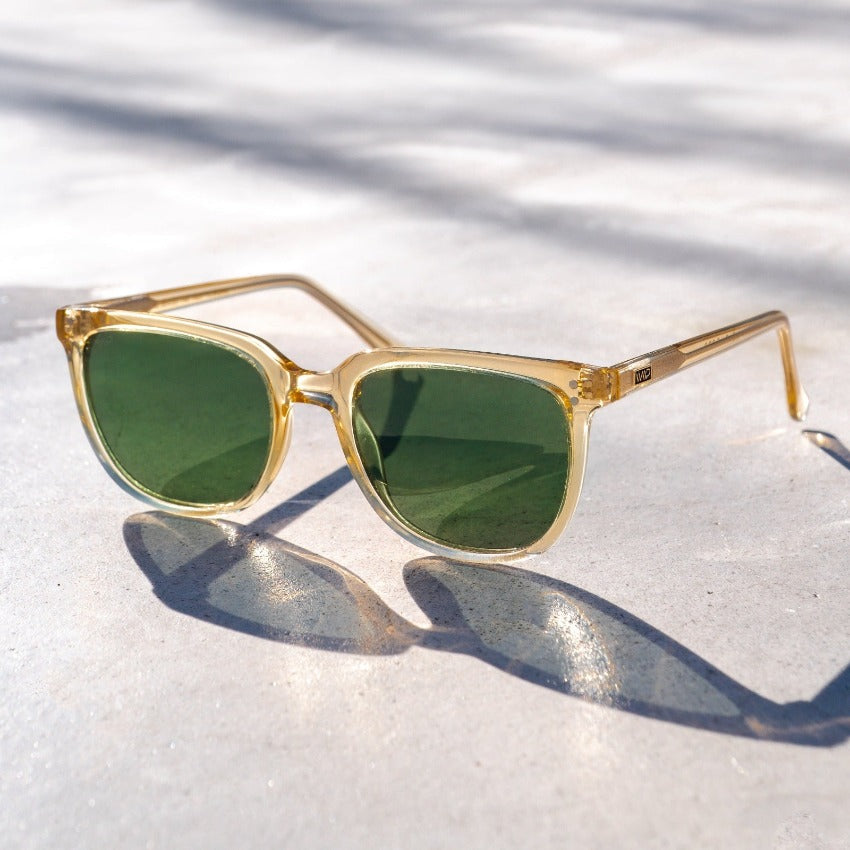Monovision and Night Driving: 8 Simple Solutions for Common Issues
Living with monovision after LASIK or cataract surgery can be life-changing, but when it comes to driving, many patients find themselves struggling with unexpected challenges. According to Dr. Sarah Martinez, ophthalmologist and spokesperson for the American Academy of Ophthalmology, "While 93% of monovision patients operate entirely glasses-free in daily life, driving presents unique visual demands that sometimes require targeted solutions."
If you're experiencing difficulties with night driving, depth perception, or general comfort behind the wheel with your monovision correction, you're not alone. Research from the National Eye Institute shows that these challenges are common and, more importantly, completely fixable with the right approach.
1. Stop Driving at Night Without Proper Support
The Issue: Many monovision patients assume they should never need glasses again and push through nighttime driving difficulties.
The Solution: Embrace targeted night driving glasses when you need them. Clinical studies show that approximately 7% of successful monovision patients use distance correction glasses specifically for nighttime driving, and this approach dramatically improves their visual comfort and safety.
Night driving presents the biggest challenge for monovision wearers due to increased glare, reduced contrast, and compromised depth perception in low-light conditions. The solution isn't to avoid driving at night, it's to give your visual system the support it needs during demanding conditions.
Consider monovision distance glasses specifically designed for driving situations. These aren't admitting defeat; they're strategic tools that enhance your independence and safety.

2. Don't Fight the Glare, Acknowledge and Redirect
The Issue: Focusing intensely on the glare from headlights and traffic lights, which makes the problem worse.
The Solution: Practice the "acknowledge and redirect" technique that driving specialists recommend for monovision patients.
When you notice glare while driving at night, don't try to eliminate it or stare directly at it. Instead, mentally acknowledge its presence, "Yes, I see that glare": then consciously shift your focus to relevant driving information like license plates, road signs, or lane markings.
Dr. Michael Chen, a neuro-ophthalmologist at Johns Hopkins, explains: "Your brain naturally wants to fixate on bright, unusual stimuli. By acknowledging the glare without fighting it, you prevent your visual system from becoming hyperfocused on the distraction."
This technique takes practice but becomes second nature within a few weeks. Start practicing during less demanding driving situations before using it in heavy traffic.
3. Stop Skipping the Adaptation Period
The Issue: Expecting perfect vision immediately after monovision surgery or lens fitting.
The Solution: Commit to a proper 4-6 week adaptation period with structured brain training exercises.
Monovision works by training your brain to automatically select the clearer image from each eye depending on the task. This neuroadaptation process doesn't happen overnight: it requires consistent practice and patience.
Research from the University of California Davis shows that patients who engage in structured visual exercises during their adaptation period report 40% fewer long-term visual difficulties compared to those who don't.
Simple Brain Training Exercise for Drivers:
- Sit in your parked car and practice focusing on the dashboard, then quickly shifting to view distant objects through the windshield
- Repeat this near-to-far focus shift 10 times, twice daily
- Gradually increase the speed of transitions as your comfort improves

4. Fix Your Lens Balance Before Anything Else
The Issue: Accepting poorly balanced monovision correction instead of fine-tuning the prescription.
The Solution: Ensure your dominant eye is optimally corrected for distance, and your non-dominant eye provides clear near vision without overcorrection.
According to Dr. Jennifer Lopez, optometrist and monovision specialist, "The most common mistake I see is incorrect eye dominance determination or inadequate prescription balance. When the setup isn't right, no amount of adaptation will create comfortable driving vision."
Signs Your Balance Needs Adjustment:
- Persistent eye strain after 4-6 weeks
- Difficulty with intermediate distances (dashboard, GPS)
- Constant switching between eyes for the same task
- Headaches during or after driving
If you're experiencing these symptoms, return to your eye care provider for prescription refinement. Don't assume you need to "live with" uncomfortable vision.
5. Address Depth Perception Changes Strategically
The Issue: Ignoring the impact of reduced depth perception on driving safety.
The Solution: Develop compensatory techniques and maintain extra following distance during your adaptation period.
Monovision can affect depth perception because your brain processes one clearly focused eye and one slightly blurred eye differently. This creates what researchers call a "modified Pulfrich effect," which can impact distance judgment, particularly during lane changes and merging.
Driving Safety Modifications:
- Increase following distance by 25% during the first month
- Use extra caution when judging parking space size
- Rely more on turn signals and mirrors rather than quick glances
- Avoid aggressive lane changes until depth perception stabilizes
Most patients find their depth perception improves significantly after full neuroadaptation, but these temporary modifications ensure safety during the transition period.

6. Don't Ignore Intermediate Vision Needs
The Issue: Struggling with dashboard instruments, GPS devices, and mirrors instead of addressing intermediate vision gaps.
The Solution: Consider task-specific glasses for situations requiring clear intermediate vision.
While monovision excels at near and distance vision, the intermediate range (roughly 18-24 inches) can present challenges. This is particularly noticeable when viewing:
- Dashboard instruments
- GPS or navigation systems
- Rearview mirror details
- Center console controls
Rather than straining to see these critical driving elements, specialty optical frames can provide targeted intermediate correction for specific driving situations.
Dr. Robert Kim, ophthalmologist at UCLA Medical Center, notes: "Part-time glasses for intermediate tasks don't undermine monovision success: they enhance it by providing optimal vision for every driving scenario."
7. Stop Using Poor Lighting as an Excuse
The Issue: Accepting reduced visual performance in challenging lighting conditions instead of optimizing your environment.
The Solution: Maximize lighting quality and minimize visual stress during adaptation and beyond.
During your monovision adaptation period, your visual system works harder to process information from both eyes. Poor lighting conditions create additional strain that can slow adaptation and reduce driving comfort.
Lighting Optimization Strategies:
- Use brighter interior lighting when reviewing maps or documents in your car
- Keep windshields and mirrors exceptionally clean to reduce light scatter
- Replace dim dashboard bulbs with brighter alternatives
- Consider polarized sunglasses for day driving to reduce glare
Additionally, start your monovision driving experience during optimal daylight conditions before progressing to dawn, dusk, or nighttime driving. This staged approach allows your brain to master the visual processing demands in easier conditions first.

8. Choose Specialty Monovision Eyewear from spare-specs for Driving Confidence
The Issue: Using generic single-vision glasses or OTC readers to “get by” when driving, especially at night.
The Solution: Use a simple solution—specialty monovision glasses from spare-specs, especially our monovision distance glasses. They add a small distance boost to your reading eye so signs, lanes, and headlights look clearer at night, and depth perception feels more natural. You keep your daytime monovision comfort and wear them only for driving.
De acuerdo a especialistas en cirugía refractiva, un par de apoyo para distancia usado solo al conducir de noche es una solución simple y efectiva. Según el Instituto Nacional del Ojo de EE. UU., el deslumbramiento y la menor sensibilidad al contraste son comunes con monovisión; los investigadores han encontrado que una corrección bien ajustada y recubrimientos antirreflejantes ayudan a reducir ambos.
Why spare-specs for driving:
- 22 years specializing exclusively in monovision patients (LASIK, cataract, and other vision correction)
- Clear and sun lens options: premium AR for night driving, polarized or photochromic for daytime glare, plus custom tints when appropriate
- Hassle-free 60-day returns so you can test on your actual routes at dusk and after dark—risk-free
- Recommended by LASIK and cataract specialists who routinely refer monovision drivers to us
DO:
- Use monovision distance glasses to gently boost the reading eye for clearer signs and better depth at night
- Choose premium anti-reflective coatings; use polarized sun lenses for daytime glare
- Try them step by step: daylight → dusk → full night on familiar roads before highway or storm driving
- Share eye dominance and post-op details with your order for the most precise setup
DO NOT:
- NO uses lectores genéricos OTC para conducir de noche—no corrigen la distancia ni la profundidad
- NO utilice lentes amarillas “night-driving” como sustituto de una prescripción y AR de calidad
- NO adivines tu dominancia ni sobrecorrijas el ojo de cerca—puede empeorar el ghosting y los errores de profundidad
- NO saltes directo a conducción nocturna a alta velocidad antes de confirmar que lees señales y carriles con claridad
Practical next steps: Start with spare-specs monovision distance glasses in clear or sun lenses, choose premium AR, and test them on your usual routes within our 60-day window. If you need clearer dashboard/GPS viewing, add a simple intermediate option to keep your dash “como un rayo láser.” When in doubt, talk with your eye care professional to confirm dominance and fine-tune the prescription.
Making Monovision Work for Your Driving Life
The key to successful monovision driving lies in understanding that adaptation is a process, not an event. Research consistently shows that patients who approach monovision with realistic expectations and proper support achieve excellent long-term satisfaction rates.
Remember that needing glasses for specific driving situations doesn't represent failure: it represents smart vision management. At spare-specs, we understand that every monovision patient's needs are unique, which is why we offer specialized monovision distance prescriptions designed specifically for post-surgery patients who want to optimize their vision for every activity, including safe, comfortable driving.
Your monovision journey should enhance your independence, not create new limitations. With these seven fixes, you're well-equipped to address common challenges and enjoy clear, confident vision behind the wheel.
Questions about monovision glasses for driving or reading? Reach out anytime!
Website: spare-specs.com
Phone: +1 (910) 994-8997







